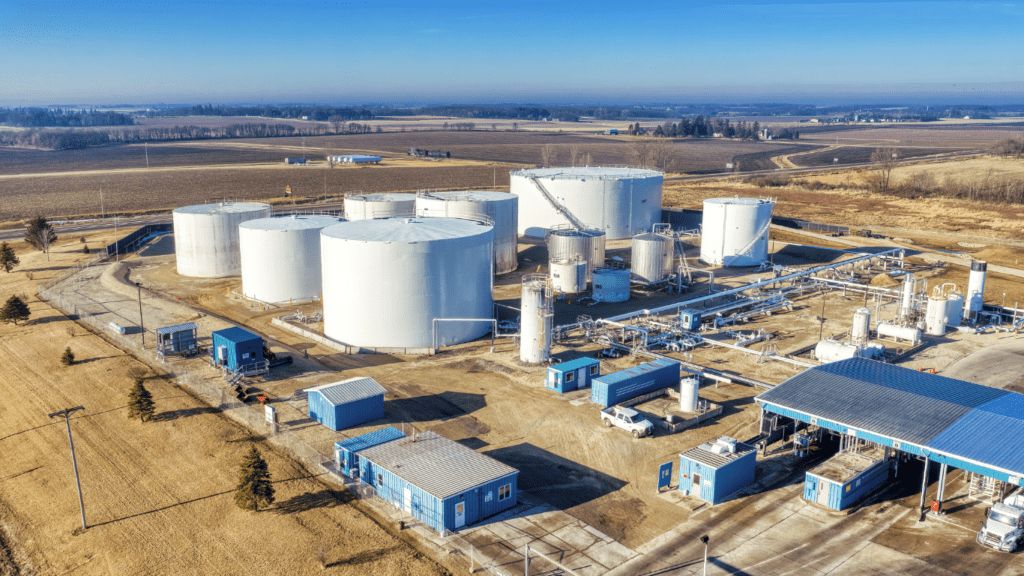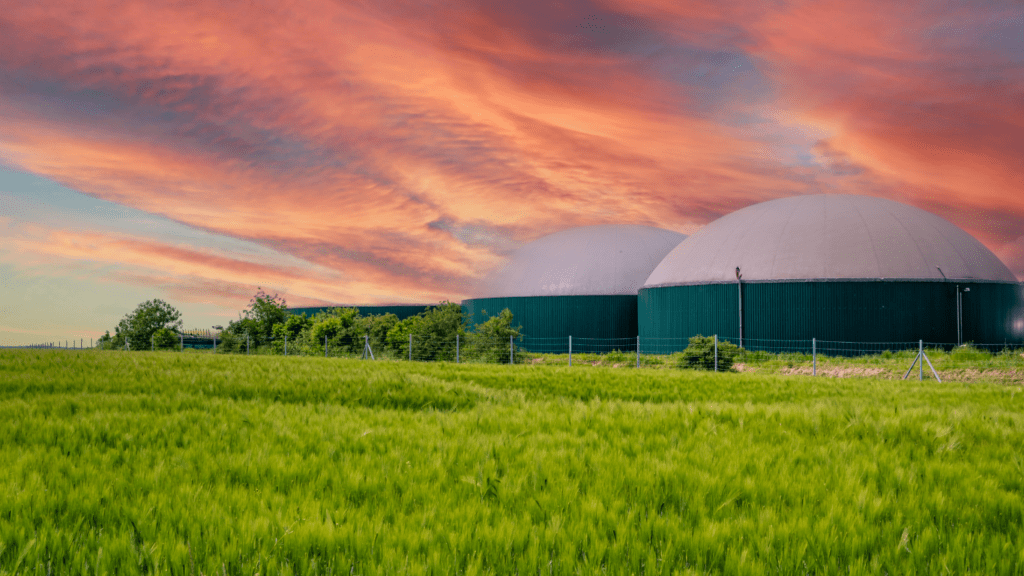Understanding Biomass Energy
Biomass energy comes from organic materials. These materials include crop residues, animal manure, and wood chips. When these materials decompose, they release stored energy. This process can be harnessed on farms for heating, electricity, or fuel.
Biomass energy is renewable. Unlike fossil fuels, it doesn’t deplete finite resources. Instead, plants and animals continuously produce biomass materials during their life cycles. This sustainable energy source helps reduce the reliance on fossil fuels.
To use biomass energy effectively, it’s crucial to understand the conversion processes. There are several pathways: direct combustion, anaerobic digestion, and gasification.
- Direct Combustion: This involves burning biomass to produce heat. It’s the simplest method and is often used for residential heating.
- Anaerobic Digestion: In this method, microorganisms break down organic material without oxygen, producing biogas and digestate. Biogas can generate electricity or fuel vehicles, while digestate can serve as a fertilizer.
- Gasification: This process heats biomass under controlled conditions to produce syngas. Syngas can then be used to generate electricity or create biofuels.
Understanding these methods helps optimize the conversion of farm-generated biomass into usable energy.
Benefits of Biomass Energy for Farms
Implementing biomass energy on a farm offers numerous benefits, enhancing both sustainability and operational efficiency. Below, I’ll discuss three critical areas where biomass energy makes a significant impact.
Environmental Impact
Biomass energy reduces greenhouse gas emissions, lowering the farm’s carbon footprint. By converting organic waste like crop residues and animal manure into energy, biomass systems help manage waste more efficiently, preventing methane emissions from decomposition.
Replacing fossil fuels with biomass energy stabilizes carbon levels, as the carbon dioxide released during combustion equals the amount absorbed by plants during growth.
Economic Advantages
Adopting biomass energy can lead to considerable cost savings. Farms can reduce energy expenses by generating their own power and heat from readily available waste materials.
Government incentives and grants make biomass energy projects more affordable. Revenue generation is possible if surplus energy is sold to the grid or processed byproducts are marketed, providing a new income stream for the farm.
Energy Independence
Biomass energy enhances a farm’s energy security, decreasing reliance on external energy suppliers. With a consistent supply of organic waste produced on-site, farms ensure a steady energy source.
This independence shields farm operations from fluctuating fuel prices and supply chain disruptions, maintaining stable operational costs and continuous energy availability.
Types of Biomass Suitable for Farms

Implementing biomass energy on your farm involves understanding the various types of biomass available. Each type offers unique benefits and suits different farming practices.
Wood and Wood Wastes
Wood and wood wastes, such as sawdust, tree branches, and bark, are prevalent on many farms. Utilizing these materials reduces waste and provides a reliable energy source. According to the U.S. Department of Energy, these sources can be efficiently converted into heat and power through combustion or gasification.
Crop Residues
Crop residues, including corn stalks, wheat straw, and rice husks, are abundant after harvest. Converting them into biomass energy helps manage agricultural waste and improves soil health by retaining essential nutrients when not fully removed. It also offers a renewable energy source that can offset traditional energy costs.
Animal Manure
Animal manure from livestock like cows, pigs, and chickens serves as an excellent biomass material. Through anaerobic digestion, manure generates biogas that can be used for electricity and heating. This process reduces methane emissions, enhancing environmental sustainability and energy efficiency on the farm.
Implementing Biomass Energy Systems
Implementing biomass energy systems on a farm involves several crucial steps. Careful planning and resource assessment are key.
Assessing Biomass Resources on Your Farm
Assessing the available biomass resources on your farm is the first step. Identify organic materials such as wood waste, crop residues, and animal manure. Calculate the volume and energy content of each resource. Use tools like biomass calculators to estimate the potential energy that can be generated. For accurate assessment, consider seasonal variations in biomass availability.
Choosing the Right Technology
Choosing the right technology is critical for efficient energy conversion. Biomass conversion technologies include direct combustion, gasification, and anaerobic digestion.
Direct combustion suits farms with significant wood waste. Gasification creates cleaner fuels and uses diverse materials. Anaerobic digestion is ideal for farms with high animal manure production. Analyze the compatibility of each technology with your farm’s biomass types and energy needs.
Installation and Maintenance
Installing biomass energy systems requires expert planning and execution. Hire professionals to ensure correct installation of equipment such as:
- boilers
- digesters
- gasifiers
Regular maintenance is essential for optimal performance and longevity. Schedule periodic inspections, clean components, and monitor system efficiency. Address any issues promptly to avoid disruptions. Proper care maximizes the benefits and lifespan of your biomass energy systems.
Case Studies of Successful Implementation
The following case studies provide insight into the successful implementation of biomass energy systems on various farms. These examples highlight practical applications and the benefits achieved.
Farm 1
Farm 1, located in Iowa, implemented a biomass energy system using corn stover. This farm chose direct combustion technology to convert corn residue into energy. The installation process involved retrofitting existing equipment to accommodate the biomass feedstock. In the first year, the farm reduced its energy costs by 30%.
Additionally, the farm improved its waste management practices by repurposing crop residues that previously posed disposal challenges. This project received support from the USDA’s Rural Energy for America Program, which offered grants and loans to offset initial costs.
Farm 2
Farm 2, situated in Vermont, opted for anaerobic digestion to process dairy manure into biogas. This system included a digester, biogas storage, and a generator to produce electricity. The farm installed this system over a six-month period, with careful planning to integrate it into daily operations.
The farm achieved a 40% reduction in electricity bills within the first year of operation. This initiative not only provided renewable energy but also produced high-quality fertilizer as a byproduct, enhancing soil health.
The farm’s success garnered attention and funding from state renewable energy incentives, encouraging further investment in sustainable practices.
These case studies demonstrate that with careful planning and support, implementing biomass energy can result in significant cost savings and environmental benefits.
Challenges and Solutions
Transitioning to biomass energy on farms brings distinct challenges. Each challenge, when addressed correctly, has viable solutions to ensure sustainable and efficient operations.
Cost and Financing
One major challenge in implementing biomass energy systems is the initial investment cost. Although biomass energy can save money over time, the upfront cost for equipment and installation is significant.
To overcome this, farmers can explore various financing options like government grants, subsidies, and low-interest loans. Programs from the USDA and the Department of Energy provide financial assistance, making it easier to manage these initial expenses. Additionally, considering a phased implementation can spread the cost over time.
Technical Expertise
Another hurdle is the requirement for specialized technical expertise. Biomass systems need proper installation and maintenance, which means operators must understand the technology.
Partnering with experienced consultants or companies specializing in biomass energy can provide the necessary expertise. On-site training and continuous education for farm staff also help in managing and operating the system efficiently. Utilizing local resources and networks can connect farmers with knowledgeable professionals in the field.
Regulatory Compliance
Farmers must navigate complex regulatory requirements when implementing biomass projects. Environmental regulations, permits, and compliance with local, state, and federal laws can seem daunting.
It’s essential to engage with regulatory bodies early in the planning stages. Consulting with legal experts who specialize in environmental and energy laws ensures compliance and avoids potential legal issues. Staying updated with policy changes and maintaining open communication with regulators can streamline the approval process and ensure adherence to all necessary guidelines.
Future of Biomass Energy in Agriculture
Biomass energy offers incredible potential for agriculture. As the world shifts towards sustainable energy, the demand for renewable sources like biomass is increasing.
In farming, adopting biomass energy supports cleaner agricultural practices and reduces dependence on fossil fuels. The growing interest and investment in green energy will likely lead to significant advancements in biomass technology, making it more efficient and cost-effective.
Technological Advancements
Continuous advancements in technology enhance the feasibility of biomass energy. Innovations such as improved biomass conversion methods and high-efficiency biomass boilers make energy production more viable for farms. These technologies not only increase energy yields but also minimize waste, providing a dual benefit.
Government Support and Policies
Governments worldwide are recognizing the importance of renewable energy. Many are introducing incentives and subsidies to promote biomass energy adoption. Farmers can benefit from grants, tax credits, and other financial support, making the initial investment in biomass systems more affordable and attractive.
Integration with Other Renewable Sources
Combining biomass energy with other renewable sources like solar and wind can create a hybrid energy system. This integration provides a more reliable and consistent power supply, addressing intermittency issues associated with some renewables. By diversifying their energy sources, farmers can achieve greater energy security and sustainability.
Research and Development
Ongoing research and development play a crucial role in the future of biomass energy. Universities, research institutions, and private companies are investing in projects to improve biomass feedstock, conversion processes, and waste management. These developments can lead to more sustainable and efficient farming practices, further reinforcing the benefits of biomass energy.
Market Trends and Opportunities
The market for biomass energy is expanding. With the rise of eco-conscious consumers, there’s a growing demand for products produced using sustainable energy. This trend presents new market opportunities for farmers utilizing biomass energy, potentially leading to better product pricing and higher profit margins.
Environmental Impact
The environmental benefits of biomass energy in farming are significant. By reducing greenhouse gas emissions and improving waste management, biomass energy helps mitigate the environmental footprint of agricultural operations. As these benefits become more evident, more farmers are likely to adopt biomass solutions, contributing to broader environmental goals.
By focusing on technological advancements, government support, integration with other renewables, research, market trends, and environmental impact, the future of biomass energy in agriculture looks promising and bright.



